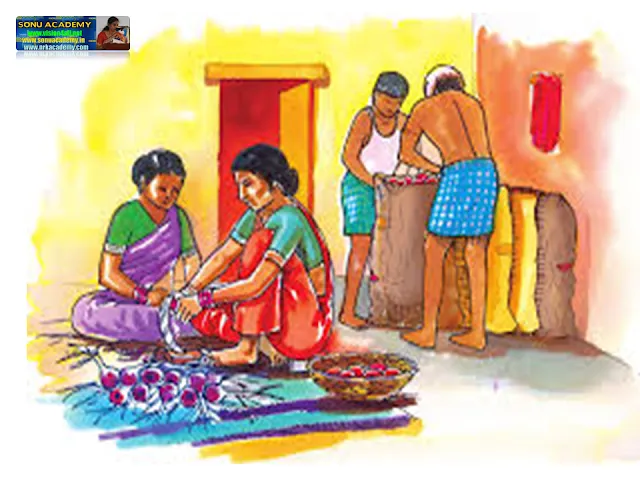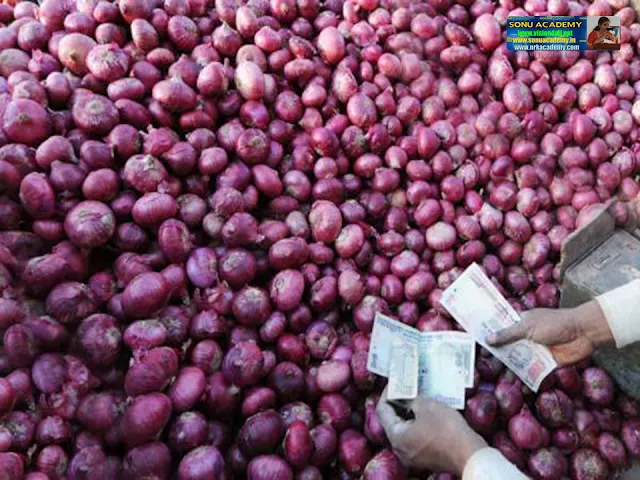I am Basva. My father is a farmer. We
live in Belvanika village in Karnataka. It is the month of July.
Like every year, Appa, my father, is
preparing the field to sow the onion crop. There are so many things to be done
at this time. To help him I too go to the field with Appa.
In the last few days, Appa has been
using the Khunti (an iron rod) to dig the soil, loosen it and make it soft.
This lesson talks about the process of
cultivating an onion crop. You can use this as an example to encourage children
to find out and describe the process for growing some crops that are common in their
area.
Sowing the Seeds
This year also my father will sow onion
seeds in the field. The bullocks will pull the Kurige and Appa will walk behind
them, sprinkling the seeds.
The Sprouts Appear It is now twenty days since the seeds were sown. The onion plants have started to sprout. Along with onion plants, weeds have also come up. Weeds grow in fields and gardens, without being planted.
Appa says that we must remove the weeds so
that they do not take up all the water and fertilisers. If there are too many
weeds, then the onion plants will not be healthy. Amma, Uncle and I, we all
help Appa to take out the weeds.
Growing Plants
I am happy to see the plants growing.
They are tall enough to reach my knees. The leaves have started turning yellow
and drying up. This means that the onions are ready to be taken out. I may not
go to school for the next few days since I will also need to help.
Everyone at home will have to work to
take the onions out. It is important that this should be done at the right
time. If we are late, the onions will rot in the ground itself and all our hard
work will be wasted.
Everyone at home is happy. This time the
onions are big and healthy. Amma and aunty use the illige to cut the dried
leaves from the top of the onions. The illige is sharp and you have to be careful
not to cut your fingers.
Appa and Uncle fill the sacks with
onions. Appa will take them in a truck to sell in the big market.
Cultivation of Onion
The onion is one of the most important
commercial vegetable crops grown in India: The demand for onion is worldwide.
It is used both in raw and mature bulb stage as vegetable and spices.
The bulb of onion consists of swollen
bases of green foliage leaves and fleshy scales. Maharashtra, Tamil Nadu, A.P.,
Bihar and Punjab are the important onion producing states.
Soil and its Preparation:
Onion can be grown on various soils. But
sandy loam, silly loam and deep friable soils are best suited for onion crop.
The land is prepared by giving 5-6 ploughings.
In onion 10 to 12 kg seeds require/ha. For
kharif it is sown in June & for rabi sown in October-November.
Manures & Fertilizers:
Harvesting, Curing, Yield and
Storage:
Follow harvesting of onion bulbs at
right stage of maturity. It is important in deciding storage life of onion as
bulbs may be stored for about six months.
The onion bulbs, reach maturity when the
plants cease to produce new leaves and roots. In onion, neck fall is the
indication of maturity.
Time of harvesting depends on several factors tike
planting season, cultivar, market price and condition of the crop.
In general, when about 50 percent neck
fall is seen crop is harvested. Onion for storage should be fully developed.Thick-neck bulbs which result due to premature harvesting do not store well.
Late harvesting leads to increased
respiration, subsequent susceptibility to diseases and excessive sprouting
during prolonged storage and left in field sunburn is also noticed.






















No comments:
Post a Comment